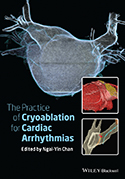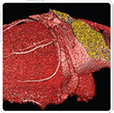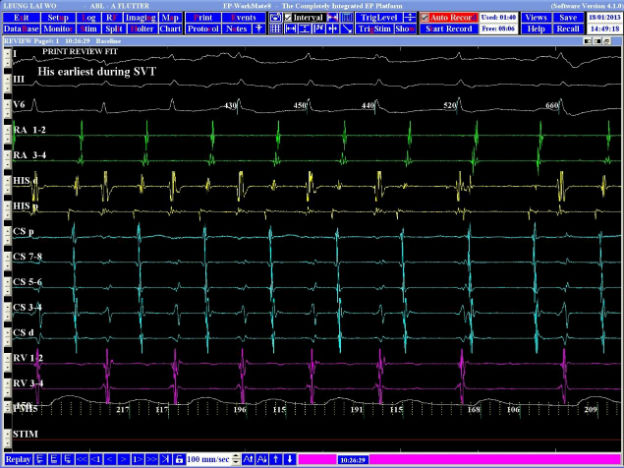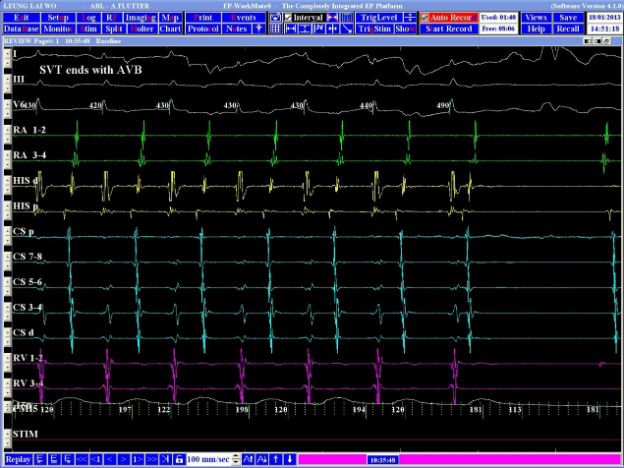A 75-year-old woman presented with episodic palpitations for 2 years. An electrocardiogram documented long RP tachycardia, which could be terminated with intravenous adenosine. Cardiac electrophysiology revealed inducible supraventricular tachycardia (SVT) (see Figures 1A and 1B).
-
1. What is the most likely mechanism for this SVT: atypical AVNRT, orthodromic atrioventricular reciprocating tachycardia (OAVRT) with a concealed paraHisian accessory pathway, or focal atrial tachycardia arising in the paraHisian area?
Show Answer
Correct answer: Atypical AVNRT. OAVRT can be ruled out by the absence of a 1:1 atrioventricular (AV) relationship during tachycardia. The fact that the SVT reproducibly terminated with atrial activation speaks against atrial tachycardia.
Cryoablation with a catheter with a 6 mm tip was performed. SVT remained inducible despite cryolesions delivered in multiple locations at P and M positions in the Koch's triangle. The cryocatheter was repositioned to an anterior position, with fluoroscopic images shown in Figures 2A and 2B, and AV signals shown in Figure 3. (See also Video Clip 4.1.)
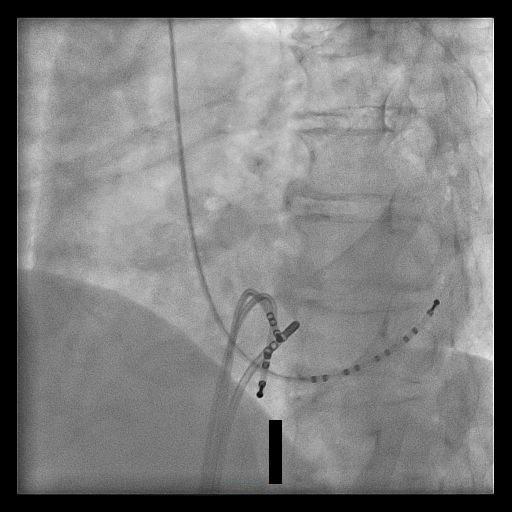
Figure 2A
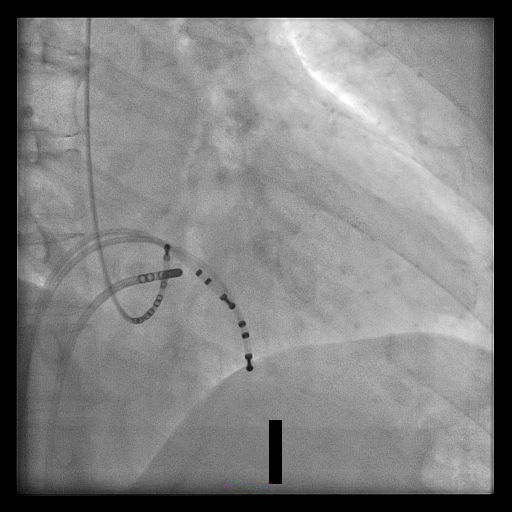
Figure 2B
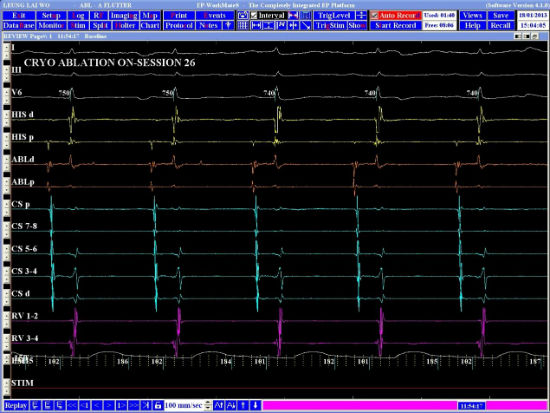
Figure 3
-
2. Would you attempt ablation at this site?
Show Answer
Correct answer: Yes. The catheter position was anterior. However, since there were no effects on the inducibility of SVT with cryoablation in more posterior locations, it was justified to attempt to deliver cryolesions more anteriorly. In fact, the optimal AV signals for cryoablation with a 4 or 6 mm tip catheter in AVNRT have not been well studied. From the experience of radiofrequency ablation in AVNRT, an AV ratio of 1:4 to 1:2 with a fractionated atrial electrogram is desirable. At this particular target site, the AV signals appeared optimal.
Cryomapping at a temperature of -30°C revealed an increase in AV block without termination of tachycardia (see Figure 4).
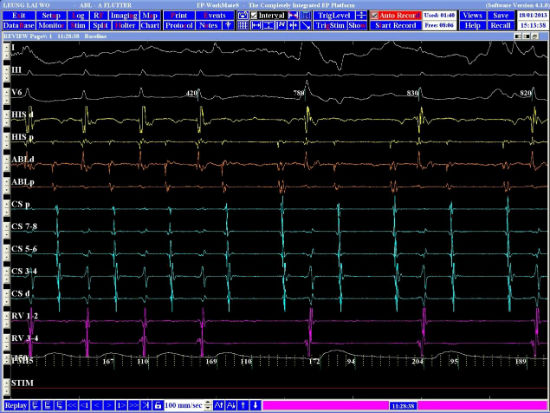
Figure 4
-
3. What would be your subsequent ablation strategy: use a freeze-thaw-freeze cycle at the same site, prolong the duration of cryoapplication, or search for another site with a larger AV signal ratio?
Show Answer
Correct answer: Search for another site with a higher AV signal ratio. The strategies of using a freeze-thaw-freeze cycle or prolonging the duration of cryoapplication can increase the size of a cryolesion. However, an increase in AV block during AVNRT with cryomapping indicated that the site was at the lower common pathway instead of the arrhythmic substrate. The arrhythmic substrate may situate more to the atrial side. A target site with a larger AV signal ratio may be more appropriate.
Cryoablation at a site with a larger AV signal ratio resulted in noninducibility of AVNRT and no complication of AV block (Figures 5A, B, and C).
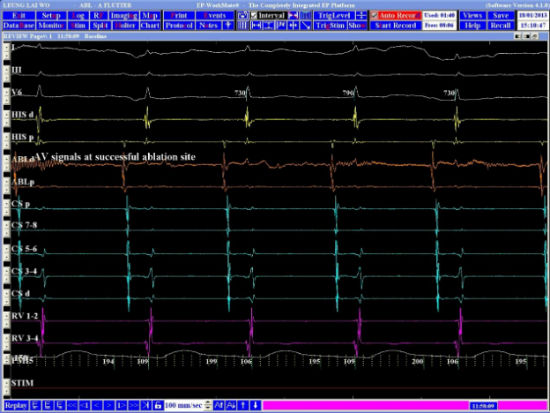
Figure 5A
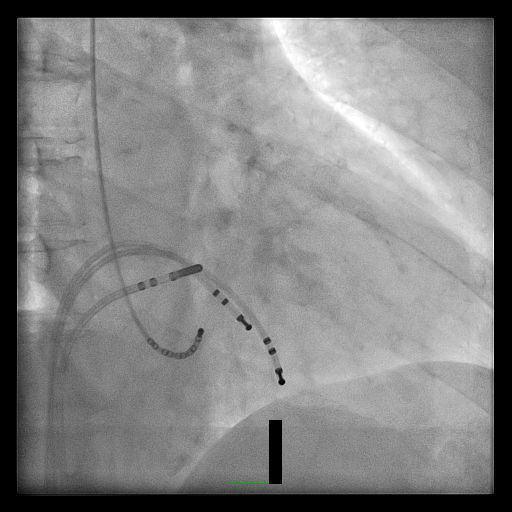
Figure 5B
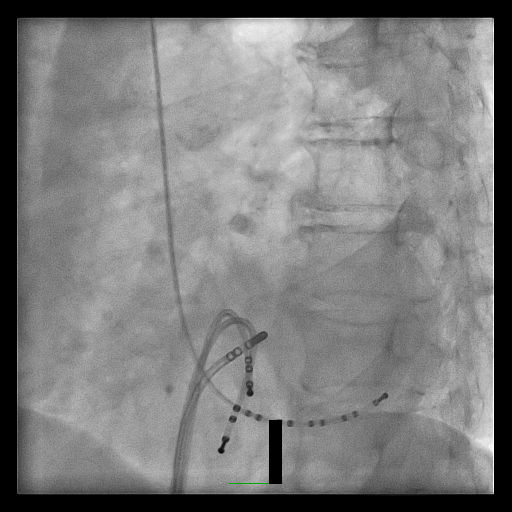
Figure 5C
